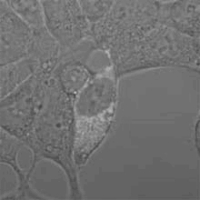
The team—led by Mark Reed, Yale’s Harold Hodgkinson Professor of Engineering & Applied Science, and Tarek Fahmy, an associate professor of biomedical and chemical engineering—used nanowire sensors to detect and measure concentrations of two specific biomarkers: one for prostate cancer and the other for breast cancer.
Nanosensors have been around for the past decade, but they only worked in controlled, laboratory settings Reed said. This is the first time we’ve been able to use them with whole blood, which is a complicated solution containing proteins and ions and other things that affect detection
To overcome the challenge of whole blood detection, the researchers developed a novel device that acts as a filter, catching the biomarkers—in this case, antigens specific to prostate and breast cancer—on a chip while washing away the rest of the blood. Creating a buildup of the antigens on the chip allows for detection down to extremely small concentrations, on the order of picograms per milliliter, with 10 percent accuracy. This is the equivalent of being able to detect the concentration of a single grain of salt dissolved in a large swimming pool.
Until now, detection methods have only been able to determine whether or not a certain biomarker is present in the blood at sufficiently high concentrations for the detection equipment to give reliable estimates of its presence. This new method is much more precise in reading out concentrations, and is much less dependent on the individual operator’s interpretation Fahmy said.
In addition to relying on somewhat subjective interpretations, current tests are also labor intensive. They involve taking a blood sample, sending it to a lab, using a centrifuge to separate the different components, isolating the plasma and putting it through an hours-long chemical analysis. The whole process takes several days. In comparison, the new device is able to read out biomarker concentrations in a just a few minutes.
Doctors could have these small, portable devices in their offices and get nearly instant readings Fahmy said. They could also carry them into the field and test patients on site
The new device could also be used to test for a wide range of biomarkers at the same time, from ovarian cancer to cardiovascular disease, Reed said. The advantage of this technology is that it takes the same effort to make a million devices as it does to make just one. We’ve brought the power of modern microelectronics to cancer detection
Source: WEBWIRE